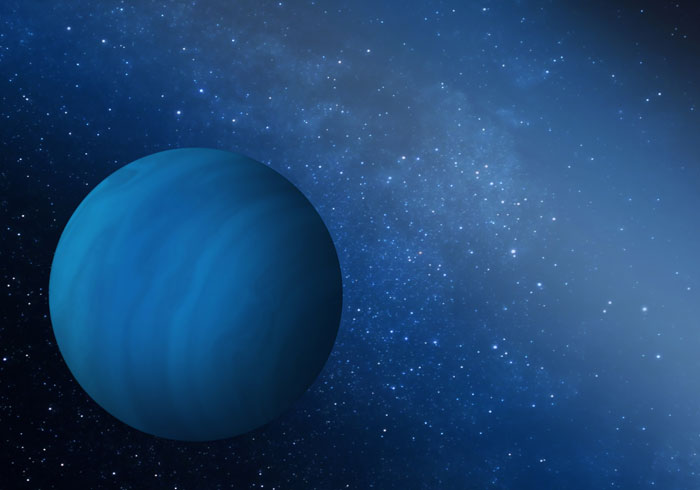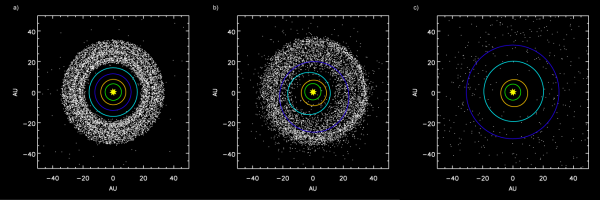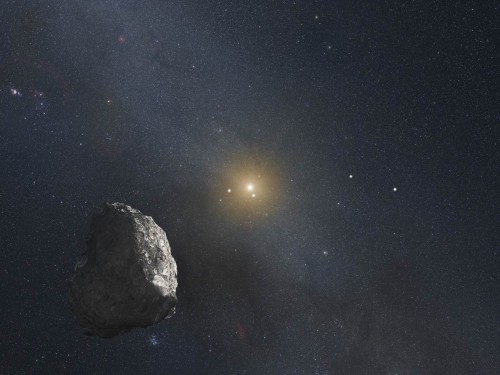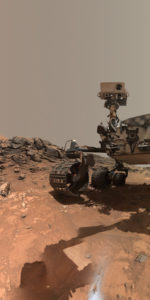
In terms of its planetary population, our Solar System is one of the most crowded ones, as evidenced by the discoveries of thousands of exoplanetary systems during the last couple of decades. Yet, according to a series of theoretical studies conducted through the years, our planetary family was even more populous early on in its history. A new such study draws a similar conclusion, by suggesting that no less than five gas giant planets roamed the Solar System during the first hundred million years after it was formed, only to be expelled into interstellar space, thus helping to give rise to the planetary arrangement we know today.
The study of the early Solar System’s dynamical evolution in essence can be described as a guessing work. Since we live in the here and now, we can only witness the end state of this evolutionary process. Based on how the Solar System is arranged today, planetary scientists are dependent on the theoretical models and computer simulations that best agree with observations in order to decipher the intricate processes that have shaped it throughout its 4.5-billion-year history. One of the most successful such theoretical models is the Nice model, according to which the early Solar System was a much more compact place, where all the gas giant planets were located much closer to the Sun than they are today and the Kuiper Belt was substantially more massive. The Nice model suggests that in these initial conditions, the outer gas giant planets (particularly Uranus and Neptune) went through a series of gravitational interactions with the millions of icy planetesimals in the proto-Kuiper Belt, which resulted in the planets’ outward migration. Through the exchange of angular momentum, as the planets moved outward most of the planetesimals moved inward toward the inner Solar System. At a certain point, approximately 800 million years following the formation of the Solar System, Jupiter and Saturn reach a 2:1 orbital resonance where for each revolution of Saturn around the Sun, Jupiter made two. This orbital resonance eventually hurtled Uranus and Neptune farther away from the Sun toward the proto-Kuiper Belt, causing most of the latter’s population to either fall toward the Sun or get flung out of the Solar System entirely.

The strength of the Nice model is that it successfully explains many of the properties of the Solar System today, like the very low mass of the Kuiper Belt and the various orbital resonances that exist in it. Nevertheless, one mystery that has puzzled astronomers for years is the existence of a certain population of Kuiper Belt Objects called the “kernel,” which reside approximately 44 Astronomical Units away from the Sun. These “kernel” KBOs, which number in the thousands, are narrowly concentrated in a certain region while exhibiting a very low inclination and eccentricity compared to other KBO populations. It had been hypothesised that the location and orbital characteristics of these kernel objects were due to the collisions that constantly take place inside the Kuiper Belt, but if that were the case these objects should have been distributed over a much wider area and not been restricted to a particular orbital plane like they are today.
In a new study, published in the September issue of The Astronomical Journal, Dr. David Nesvorny, an astronomer at the Southwest Research Institute in Boulder, Colo., set out to provide an answer for this perplexing enigma. More specifically, Nesvorny ran thousands of computer simulations of the early Solar System with varying initial conditions, in order to study the dynamical processes whose outcome best fitted the arrangement of the Solar System as it appears today. The results of the simulations led Nesvorny to propose the “jumping Neptune” hypothesis, in which Neptune was slowly migrating away from the Sun in the early Solar System and was locked in a 2:1 resonance with the kernel population of the Kuiper Belt, which it turn followed the massive planet in its outward trek. Per the simulation, by the time Neptune had reached its present distance from the Sun (approximately 4.5 billion km), it was suddenly scattered off farther outward by 7.5 million km. The results of Nesvorny’s study showed that this sudden orbital “jump” by Neptune could only be explained if a fifth gas giant planet was present at that location as well, whose gravitational interaction with Neptune most probably caused it to be ejected from the Solar System altogether.

The results of this study are very similar to a previous one that was conducted by Nesvorny back in 2011, which showed that the presence of the four gas giant planets in our Solar System today required the existence of a fifth one early in its history, that eventually got knocked off into interstellar space through the chaotic gravitational interactions with the rest. “The Kuiper belt is the clue,” says Nesvorny. “You see the structures there, and you try to figure out what kind of evolution would fit those structures.”
Even though his simulations have provided compelling results, Nesvorny is quick to point out in his study that much work is still needed in order to have a better picture of the dynamical interactions that could have taken place in the early Solar System. One caveat of the study is the fact that it only takes into account only one “jump” by Neptune during the latter’s outward migration away from the Sun, when multiple ones could have actually taken place. If so, that would have further repercussions in the overall structure of the proto-Kuiper Belt. As Nesvorny himself notes, the only way to test the results of his study is through further observations of the Kuiper Belt. Such observations are expected later this year, courtesy of the Outer Solar System Origins Survey, which aims to track the locations and orbits of trans-Neptunian objects inside the Kuiper Belt. “I’m very much looking forward to seeing what kind of observations they will have and how it fits the modeling,” says Nesvorny.
Even though the study of the Solar System’s evolutionary history is akin to studying a crime scene, where the events themselves have already transpired and only trace evidence have been left behind to help tell the story, significant progress has nevertheless taken place in recent years that has revealed the Solar System was much more dynamic and chaotic than previously thought. And, as is most often the case in astronomy and astrophysics, even our wildest guesses pale when compared to the Cosmos itself.
Want to keep up-to-date with all things space? Be sure to “Like” AmericaSpace on Facebook and follow us on Twitter: @AmericaSpace






Let me throw this out there.
Let’s say Mercury was the core of such a gas giant. It pulled enough mass off the sun causing it to not be a flare star, but lost its atmosphere in the process. The Early inner solar system then gets a lot of water and atmosphere in the process blown off Mercury, leaving the outer solar system dry.